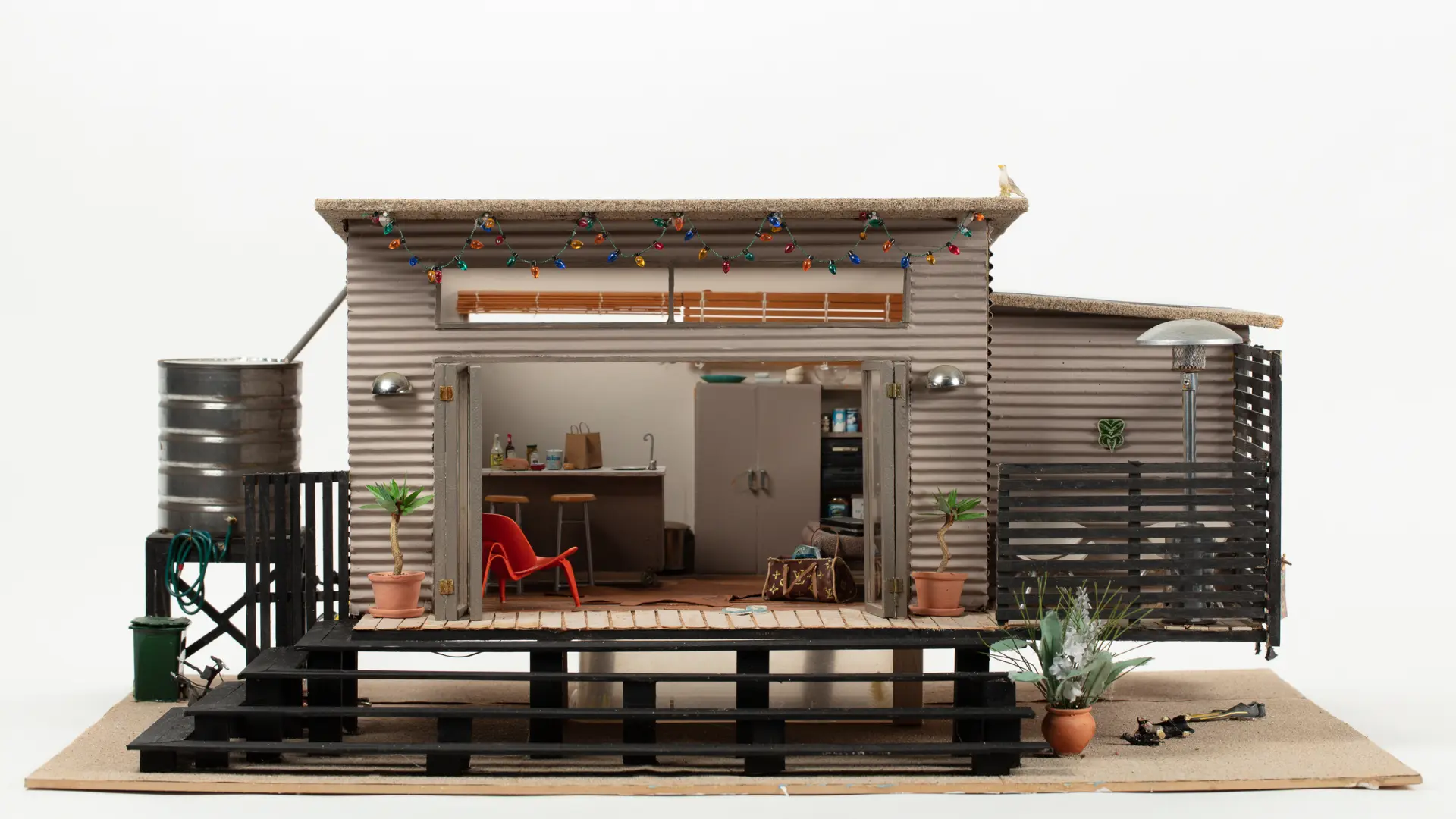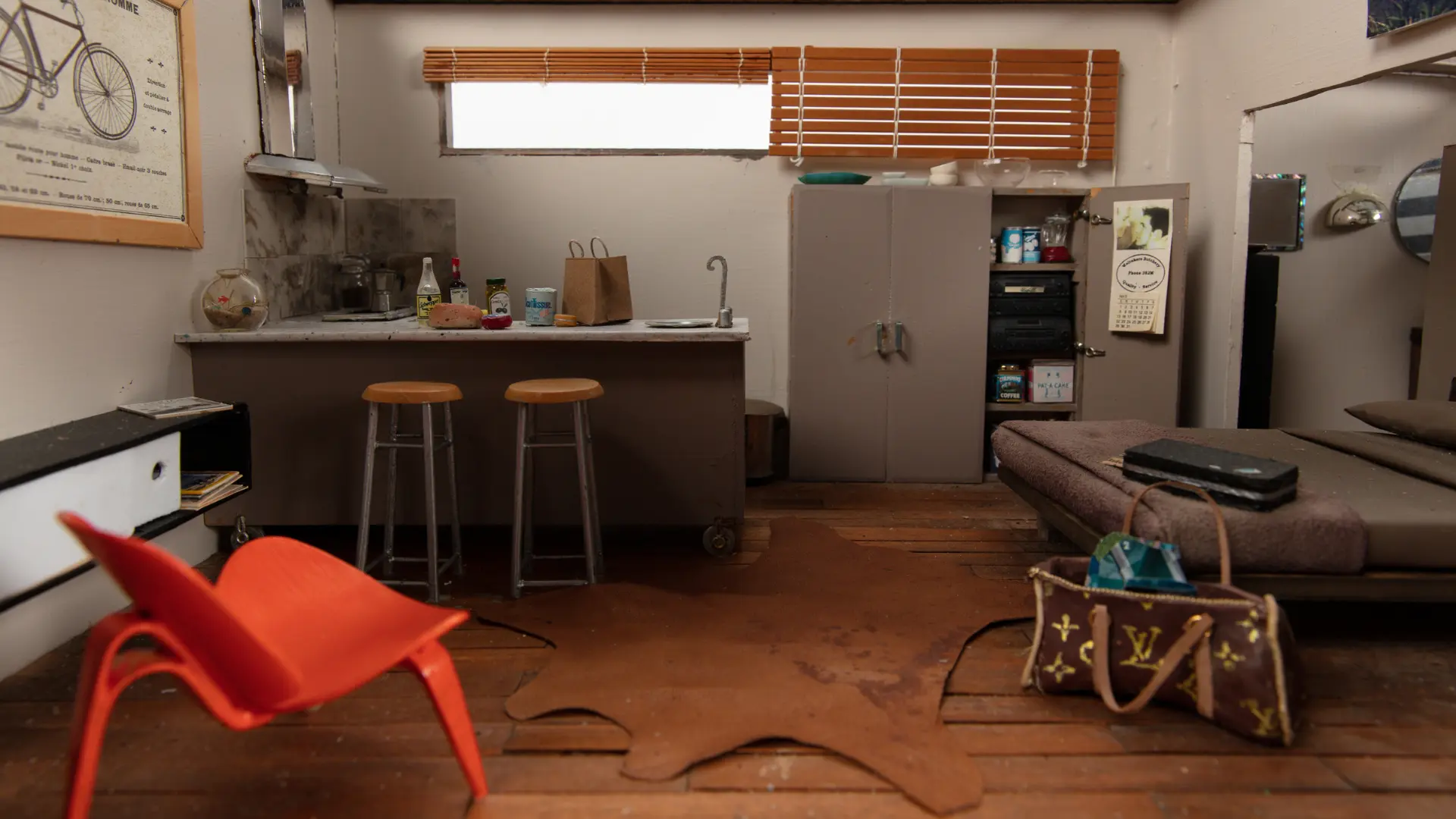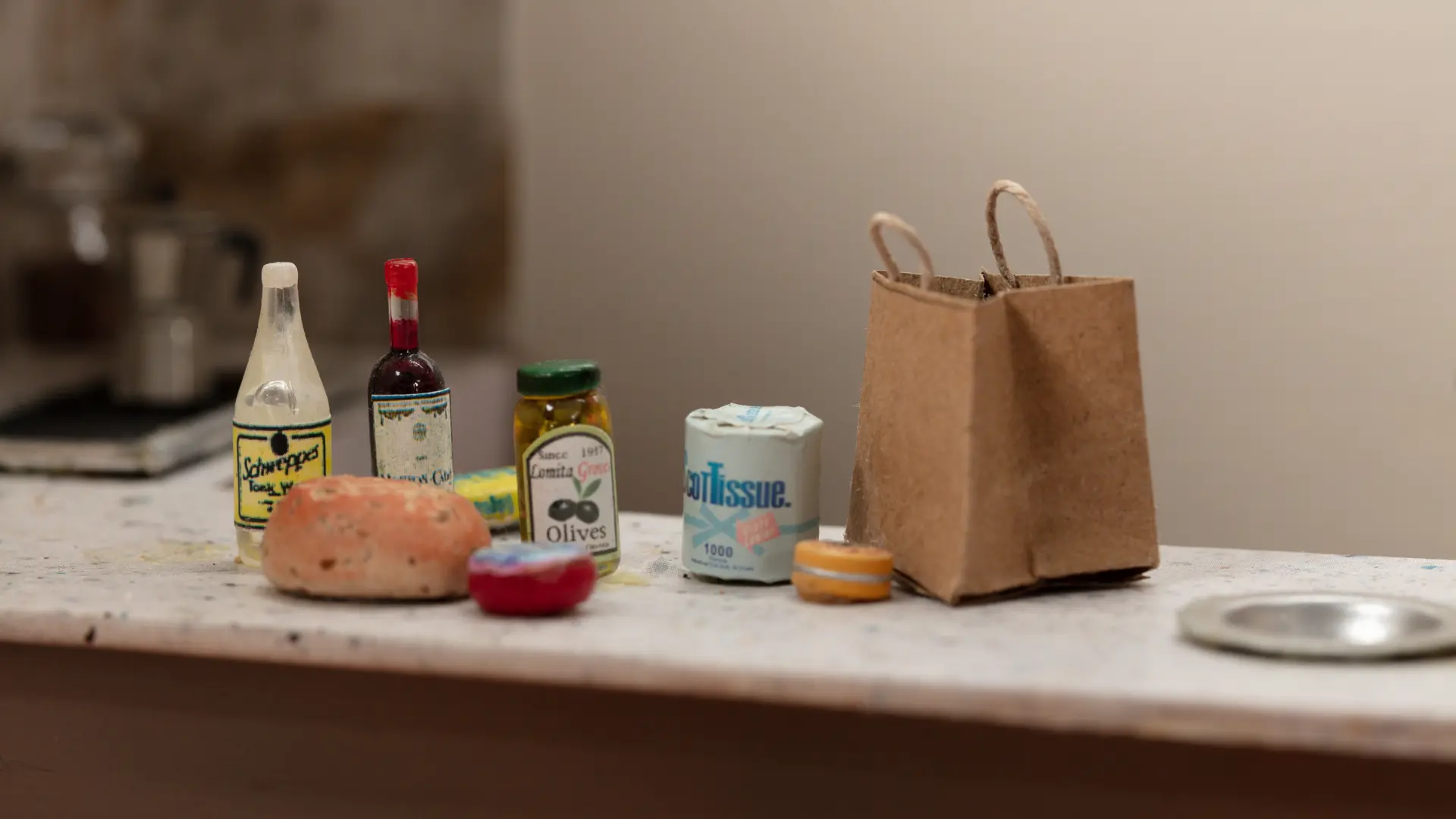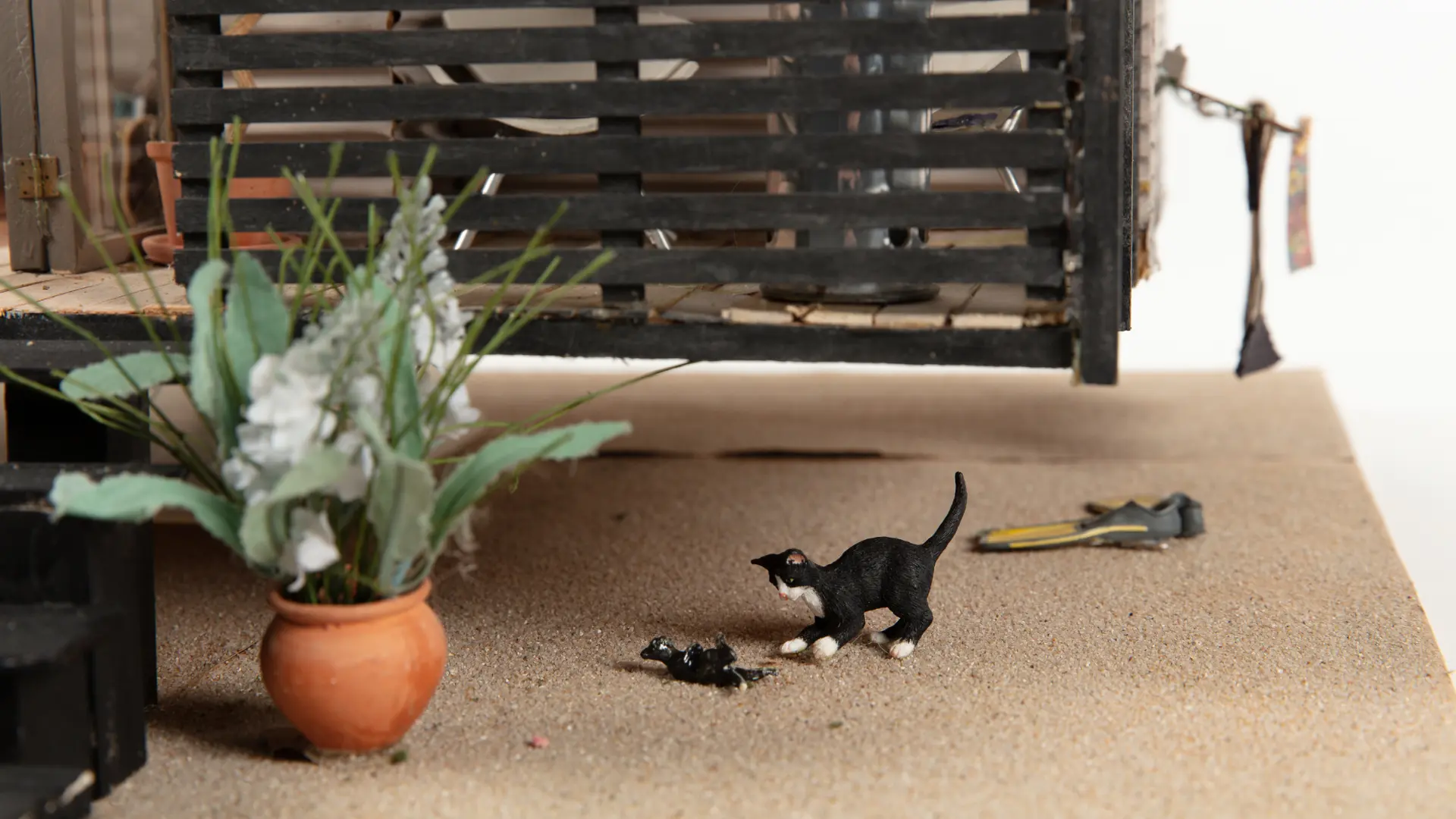“My big sister’s wonderful dollhouse that our uncle Keith made her, complete with a battery-activated bare bulb in each room and rather out-of-scale brass light switches, was my first love affair. I can remember the oval pale green kitchen table with red stencil as trim, plus four metal chairs also made by him. My Mother added the 1950’s My Dolly’s Kitchen range. The latter went west at some stage but I have managed to collect pieces from TM or Ebay over the years – and at great expense I might add.”
In the early days, Conway kept “bucket loads” of tiny bits and pieces around the house, knowing they could be used as a planter or a table base. But the arrival of online shopping means it’s much easier to source materials these days (and that stockpiling materials is less of a necessity).
“Websites like AliExpress cater for the small minded. And there are amazing miniaturists all over the world who sell their work online. I like to build as much as I can myself and then splash out on things I don’t have the talent to do.”
The thing she likes best about making miniatures is the fact that it takes her mind off of everyday problems.
“I love the planning stages of what I want to make; the lists of what will work and creating rough sketches of how I want it to turn out. I enjoy making things for others to discover and I like being able to lift up a roof, or open a door, and get in close to what I’m working on.”



